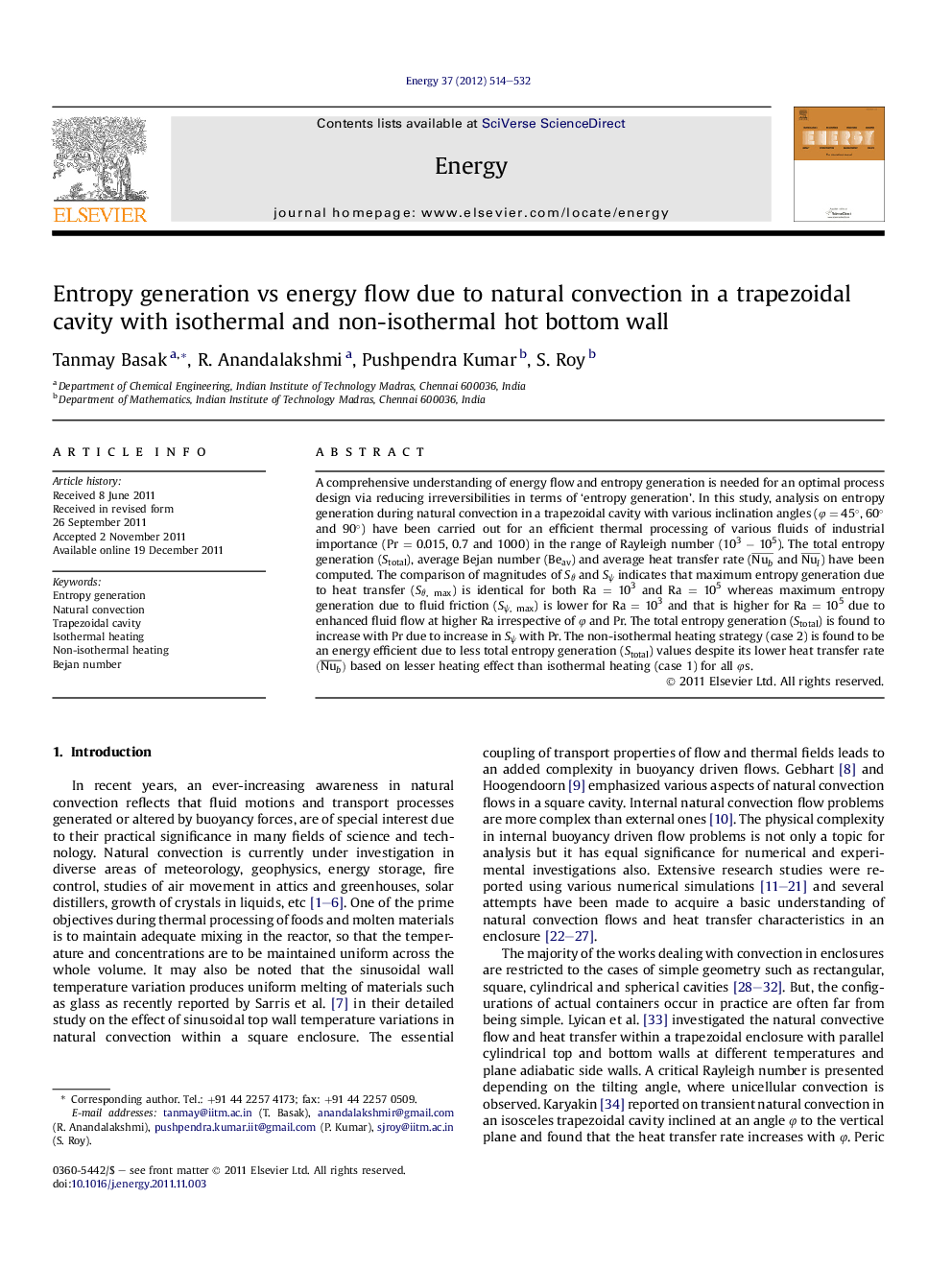| Article ID | Journal | Published Year | Pages | File Type |
|---|---|---|---|---|
| 1733952 | Energy | 2012 | 19 Pages |
A comprehensive understanding of energy flow and entropy generation is needed for an optimal process design via reducing irreversibilities in terms of ‘entropy generation’. In this study, analysis on entropy generation during natural convection in a trapezoidal cavity with various inclination angles (φ = 45°, 60° and 90°) have been carried out for an efficient thermal processing of various fluids of industrial importance (Pr = 0.015, 0.7 and 1000) in the range of Rayleigh number (103 − 105). The total entropy generation (Stotal), average Bejan number (Beav) and average heat transfer rate (Nub¯ and Nul¯) have been computed. The comparison of magnitudes of Sθ and Sψ indicates that maximum entropy generation due to heat transfer (Sθ, max) is identical for both Ra = 103 and Ra = 105 whereas maximum entropy generation due to fluid friction (Sψ, max) is lower for Ra = 103 and that is higher for Ra = 105 due to enhanced fluid flow at higher Ra irrespective of φ and Pr. The total entropy generation (Stotal) is found to increase with Pr due to increase in Sψ with Pr. The non-isothermal heating strategy (case 2) is found to be an energy efficient due to less total entropy generation (Stotal) values despite its lower heat transfer rate (Nub¯) based on lesser heating effect than isothermal heating (case 1) for all φs.
► Analysis of entropy generation is carried out for various isothermal and non-isothermal heating situations. ► Natural convection for fluids within various trapezoidal cavities are considered. ► Detailed analysis on flow, temperature and local entropy maps are done. ► Entropy production and overall heat transfer rates are functions of various angles of inclinations of side walls. ► Non-isothermal heating situation is found to energy efficient based on minimal entropy generation.
